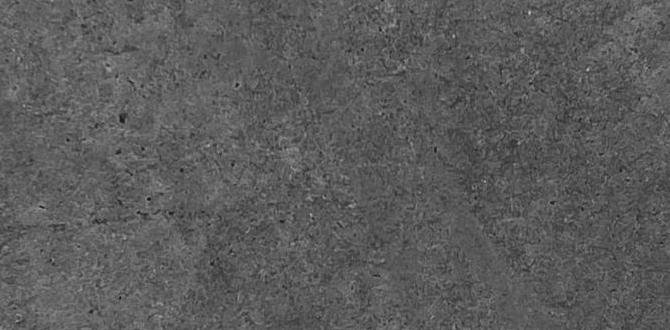Quick Summary: Expertly mount your flat screen TV with confidence! This guide breaks down essential wall mounting tips, from choosing the right mount and locating studs to ensuring a secure, level, and safe installation. Follow these secrets for a professional-looking setup that enhances your home entertainment.
Thinking about mounting your shiny new flat screen TV on the wall? It’s a fantastic way to save space and give your living room that sleek, modern look. But the thought of drilling into your wall and trusting your valuable TV to a few screws can be a bit daunting. Don’t worry, you’re not alone! Many people feel a little hesitant. That’s where this guide comes in. We’re going to walk through the process step-by-step, sharing the essential secrets that make wall mounting a breeze, even for beginners. Get ready to transform your viewing experience!
Why Wall Mount Your Flat Screen TV?
Hanging your flat screen TV on the wall isn’t just about aesthetics, though it certainly ups the style factor. It’s a practical choice that offers several benefits:
- Space Saving: By lifting your TV off a stand, you free up valuable surface area. This is especially helpful in smaller rooms.
- Improved Viewing Angles: You can often position the TV at the ideal height and angle for your seating area, leading to a more comfortable and immersive experience.
- Child and Pet Safety: A wall-mounted TV is much harder to knock over, reducing the risk of accidents.
- Clean Aesthetics: Say goodbye to a tangle of wires and bulky stands. Wall mounting creates a streamlined, minimalist look.
- Flexibility: Many mounts allow for tilting, swiveling, or extending the TV, giving you control over your viewing position.
Choosing the Right TV Mount: The Foundation of Success
Before you even think about drilling, selecting the correct TV mount is crucial. It’s the anchor for your entire setup. There are a few main types, each with its own advantages:
Types of TV Mounts
- Fixed Mounts: These are the simplest and most affordable. They hold the TV flat against the wall, just inches away. They’re great if you have perfect seating alignment and don’t need flexibility.
- Tilting Mounts: If glare from windows or lights is an issue, a tilting mount is your best friend. It allows you to angle the TV up or down to reduce reflections and improve visibility.
- Full-Motion (Articulating) Mounts: These offer the most flexibility. You can extend the TV away from the wall, swivel it left or right, and tilt it. Perfect for corner installations or rooms where you’ll be watching from multiple locations.
Key Compatibility Checks
When choosing, always look for these two key compatibility features:
- VESA Pattern: This is the standard for mounting holes on the back of your TV. Your TV will have four threaded holes, and the distance between them (horizontal x vertical) is its VESA pattern (e.g., 200x200mm, 400x400mm). Your mount must match your TV’s VESA pattern. Check your TV’s manual or manufacturer website for this information.
- Weight Capacity: Every mount has a maximum weight it can safely support. Ensure the mount’s weight capacity significantly exceeds your TV’s weight. It’s always better to be safe than sorry!
A good place to start for reliable mount information is the VESA mounting pattern guide, which explains these standards in detail.
Gathering Your Tools: What You’ll Need
Having the right tools on hand makes the installation process much smoother and safer. Here’s a checklist of essentials:
- The TV Mount: Including all its hardware (screws, bolts, washers).
- Stud Finder: Essential for locating wall studs, which provide the necessary support. Electronic stud finders are generally easier to use.
- Drill and Drill Bits: You’ll need bits for pilot holes and potentially larger ones for lag bolts.
- Level: Crucial for ensuring your TV is perfectly straight. A laser level can be very helpful.
- Measuring Tape: For precise placement.
- Pencil: For marking pilot hole locations.
- Socket Wrench Set: For tightening lag bolts.
- Screwdriver Set: For attaching brackets to the TV.
- Optional: Wall fishing tools if you plan to hide cables within the wall.
Step-by-Step Guide to Mounting Your Flat Screen TV
Now, let’s get down to business! Follow these steps carefully for a secure and professional installation.
Step 1: Determine the Ideal Viewing Height
This is more art than science, but there’s a “sweet spot.” Generally, the center of your screen should be at eye level when you’re seated. A common guideline is to have the bottom edge of the TV about 20-30 inches off the floor, but it can vary based on your seating arrangement and TV size.
- Sit in your primary viewing position.
- Have someone hold the TV (or the mount arm) at various heights while you’re seated.
- Mark the approximate center height on the wall.
Step 2: Locate Wall Studs
This is the MOST critical step for safety. Your TV mount must be secured to wall studs, not just drywall. Drywall alone cannot support the weight of a TV. Studs are the vertical wooden beams inside your wall.
- Use your stud finder to scan the area where you plan to mount the TV.
- Mark the edges of the studs. Most stud finders will indicate the center.
- Once you’ve found the center, verify by gently tapping the wall or poking a small nail in (don’t worry, you’ll cover these holes later). You’re looking for the solid “thud” of wood.
- Measure the distance between studs. Standard spacing is usually 16 or 24 inches on center. Your mount’s mounting plate needs to span at least two studs.
For reliable information on finding studs and understanding wall construction, consult resources from the Building Science Information website.
Step 3: Mark and Drill Pilot Holes for the Wall Plate
Once you’ve identified your studs and chosen your height, it’s time to mark where the lag bolts will go.
- Hold the mount’s wall plate against the wall at your desired height, centered over the studs.
- Use your level to ensure the plate is perfectly horizontal.
- Mark the drill hole locations through the slots in the wall plate onto the wall. Make sure these marks are centered into the studs.
- Remove the wall plate.
- Using a drill bit that is slightly smaller than the diameter of your lag bolts (check your mount’s manual for recommended pilot hole size), drill pilot holes at your marked locations. Drill deep enough to go through the drywall and substantially into the stud.
Step 4: Mount the Wall Plate
This is where the mount starts to take shape on your wall.
- With your pilot holes drilled, position the wall plate back on the wall, aligning the holes.
- Insert the provided lag bolts (and washers, if included) through the wall plate and into the pilot holes.
- Using your socket wrench, tighten the lag bolts securely. Make sure the wall plate is snug against the wall and doesn’t wiggle. Don’t overtighten, but ensure it’s very firm.
Step 5: Attach the Mounting Brackets to the TV
Now, it’s time to get the TV ready for its new home.
- Lay your TV face-down on a soft, clean surface (like a blanket or the TV box). Be careful not to press on the screen.
- Locate the VESA mounting holes on the back of the TV.
- Attach the appropriate brackets (usually labelled “TV brackets” or “arms”) to the back of the TV using the screws provided with the mount. These screws are often packaged with different sizes and lengths to fit various TVs. Use only the screws that fit snugly without going too deep or being too short. Your TV manual or mount kit should specify which screws to use.
- Ensure the brackets are oriented correctly, usually with the wider part at the top or bottom, as indicated by the mount instructions.
Step 6: Hang the TV on the Wall Plate
With a friend’s help, this step is much easier and safer.
- Carefully lift the TV and align the brackets on the back of the TV with the wall plate.
- Hook the brackets onto the wall plate. Most mounts have a system where the brackets slide down or click into place.
- Secure the TV to the wall plate using any locking screws or mechanisms that came with your mount. This prevents the TV from being accidentally lifted off the plate.
Step 7: Connect Cables and Test
Once the TV is securely mounted, it’s time to plug everything in.
- Connect your power cable, HDMI cables, and any other necessary connections.
- Consider cable management solutions to keep things tidy.
- Turn on your TV and test all functions. Check that it’s level. If your mount is adjustable, gently test its range of motion.
Safety First: Essential Considerations
Mounting a TV involves risks if not done correctly. Always prioritize safety:
- Never mount directly into drywall or hollow walls. Always find and use studs.
- Check your mount’s weight capacity. Ensure it’s well above your TV’s weight.
- Use the correct hardware. Don’t substitute screws or bolts unless you’re absolutely sure of their strength and compatibility.
- Get help for lifting. Modern TVs can be surprisingly heavy and awkward.
- Double-check your work. Before letting go completely, give the TV a gentle tug to ensure it’s secure.
- Consider wall type. These instructions are primarily for standard drywall with wooden studs. Mounting on brick, concrete, or metal studs requires different hardware and techniques. For expert advice on different wall types, check out resources like This Old House.
Common Wall Mounting Mistakes to Avoid
Even experienced DIYers can make mistakes. Here are a few common pitfalls:
| Mistake | Why It’s Bad | How to Avoid It |
|---|---|---|
| Mounting into paint or wallpaper only. | Drywall alone is not strong enough to hold the TV. | Always locate and screw into wall studs. |
| Ignoring VESA compatibility. | The TV won’t fit on the mount. | Check your TV’s VESA pattern and ensure the mount matches. |
| Overestimating stud finder accuracy. | You might drill into empty space. | Use a stud finder, but confirm by probing or tapping. |
| Mounting too high. | Uncomfortable viewing experience. | Place the TV center at eye level when seated. |
| Using the wrong screws. | Can damage TV, or screws might not hold. | Use screws recommended by the mount manufacturer. |
| Not using a level. | A crooked TV is unsightly. | Use a level on the wall plate before tightening lag bolts. |
Cable Management: The Finishing Touch
Once your TV is mounted, dealing with cables can be messy. Here are a few ways to keep them tidy:
- In-Wall Cable Management Kits: These kits allow you to run cables through the wall, behind a paintable cover plate. Many are designed for power and low-voltage cables (like HDMI). Be mindful of electrical codes and avoid running power and data cables in the same conduit if possible.
- Cable Sleeves/Wraps: A simpler solution, these fabric or plastic sleeves zip or wrap around your cables, bundling them together.
- Cable Raceways: Adhesive-backed plastic channels that stick to the wall and hide cables. They can be painted to match your wall.
- Zip Ties and Velcro Straps: Great for bundling cables behind the TV or along mounts.
For detailed guidance on safe in-wall cable routing, the This Old House guide is a reliable resource.
Frequently Asked Questions (FAQ)
Q1: How high should I mount my TV?
A1: The general rule is to place the center of the TV at your eye level when seated in your primary viewing position. For most living rooms, this means the bottom edge of the TV might be around 20-30 inches from the floor.
Q2: Can I mount a TV on a plaster wall?
A2: Yes, but it’s more challenging. Plaster walls often have wooden lath behind them, which can be brittle. You’ll need to be very careful when drilling pilot holes directly into the studs behind the lath. Using a stud finder is essential, and be prepared for potential plaster dust.
Q3: What if I can’t find studs?
A3: You must find studs. If your stud finder isn’t working, try tapping on the wall to listen for solid sounds versus hollow sounds. You can also gently drill small holes to confirm wood. Never rely on drywall anchors alone for a TV mount; they are not designed for that kind of sustained weight and risk.
Q4: How do I know which screws to use for my TV?
A4: Your TV mount kit will come with a selection of screws in different lengths and diameters. Look at the back of your TV for the VESA mounting holes. Find the screws from the mount kit that thread into these holes smoothly and securely without being too short or too long. Your TV manual or mount instructions will often specify which screws to use for most common TV sizes.
Q5: My TV seems a little crooked. Can I fix it?
A5: Many mounts are designed with small adjustments for leveling after the TV is hung. Check your mount’s manual for any leveling screws or mechanisms. If it’s significantly off, you may need to loosen the mounting bolts, adjust the plate, and re-tighten. If it’s a serious issue and your mount doesn’t allow for adjustment, it might be necessary to remove the TV and re-mount the wall plate.
Q6: Do I need to mount into two studs?
A6: Yes, for most standard TVs and mounts, it’s crucial to secure the wall plate to at least two studs. This distributes the weight and provides maximum stability. Ensure your mount’s mounting plate is wide enough to span two or more studs (typically 16 or 24 inches apart).
Q7: What about professional installation?
A7: If you’re uncomfortable with any part of this process, or if you have a particularly large or heavy TV, consider hiring a professional. Many electronics stores and local handymen offer TV mounting services, which can give you peace of mind.
Conclusion
Wall mounting your flat screen TV can seem like a big project, but by breaking it down into manageable steps and following these essential tips, you can achieve a secure, professional-looking installation. Remember to choose the right mount for your TV, locate those studs diligently, use the correct tools and hardware, and always prioritize safety. With a little patience and care, you’ll be enjoying your perfectly positioned TV in no time, with a cleaner, more organized living space.





